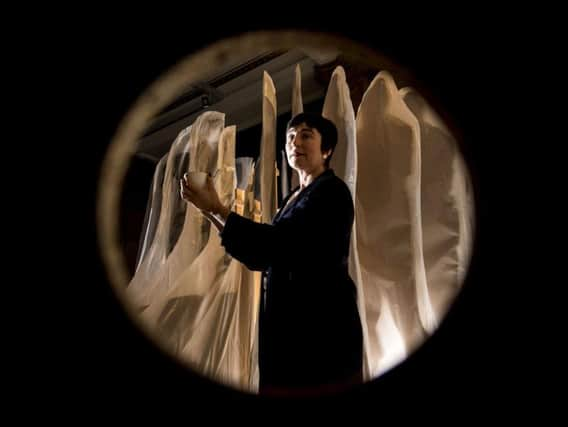Hunger-striking suffragettes inspire new work of art for Glasgow


The Turner Prize nominee has honoured campaigners who were arrested, tried and imprisoned for taking part in right-to-protests with a large-scale piece for Kelvingrove.
Christine Borland, one of Scotland’s leading visual artists, created silhouette figures of suffragettes being force-fed in the run-up to the First World War.
Advertisement
Hide AdThe installation, entitled I Say Nothing, was created after the Ayrshire-born artist discovered a white ceramic invalid “feeder cup” in Glasgow’s museums collection during a year of research.
The teapot-style vessel, part of the museum’s First World War archives, was an example of the kind of cup that was used to feed sick and wounded soldiers during the conflict.
Borland’s work, which features characters in two different poses to reflect the contrasting treatment of soldiers and the suffragettes, is said to “confront the dichotomy of institutional care and brutality.”
It has gone on semi-permanent display at Kelvingrove after being commissioned as part of the cultural programme marking the 100th anniversary of the year.
Although force-feeding of hunger-striking suffragettes is thought to have been banned in Glasgow, it was carried out in Perth Prison, where some protesters were sent.
Borland’s ideas for her Kelvingrove piece evolved after she read about the case of two Glasgow University graduates who were put behind bars for smashing windows at a suffragette protest in London. The Women’s Social and Political Union presented Margaret and Frances McPhun with hunger strike medals after their release from prison.
Advertisement
Hide AdBorland was going through a box of war-time artefacts in the Glasgow museums collection when she recognise a feeder cup similar to those she had seen while working at Mount Stuart, on the Isle of Bute, kept from its time as a naval hospital.
Borland, who visited Flanders in Belgium as part of her research, said: “It is an object which is so simple in itself but becomes so much more complex when you start inserting the characters around it who are missing.
Advertisement
Hide Ad“When I was going through the museums archive I came across a reference to a feeder cup in relation to the force feeding of the suffragettes from Glasgow.
“It became an object that did not speak of its power immediately, but when you began to read more about the dynamics around it - its association with care and nursing but also an association with brutality - were just mind-blowing.”